Some antivirus programs may mistakenly flag MiniTool Partition Wizard as a potential threat. This is a false positive caused by overly sensitive security rules. Learn why it happens and how to safely install or whitelist MiniTool Partition Wizard on your PC.
Recently, MiniTool Partition Wizard is wrongly reported as threats or potentially unwanted application by security software like ESET and WEBROOT.
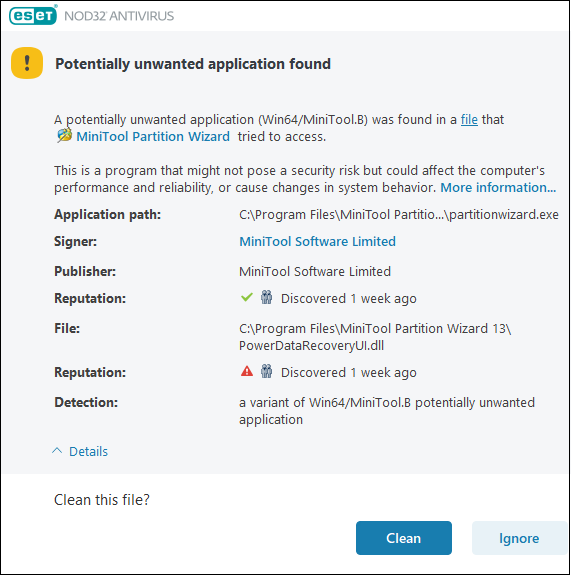
This is a false postive, and our program is 100% safe and clean.
Is It Safe to Use MiniTool Partition Wizard
Yes. MiniTool software is digitally signed and has been tested for security and stability. It contains no malware, adware, or bundled third-party software.
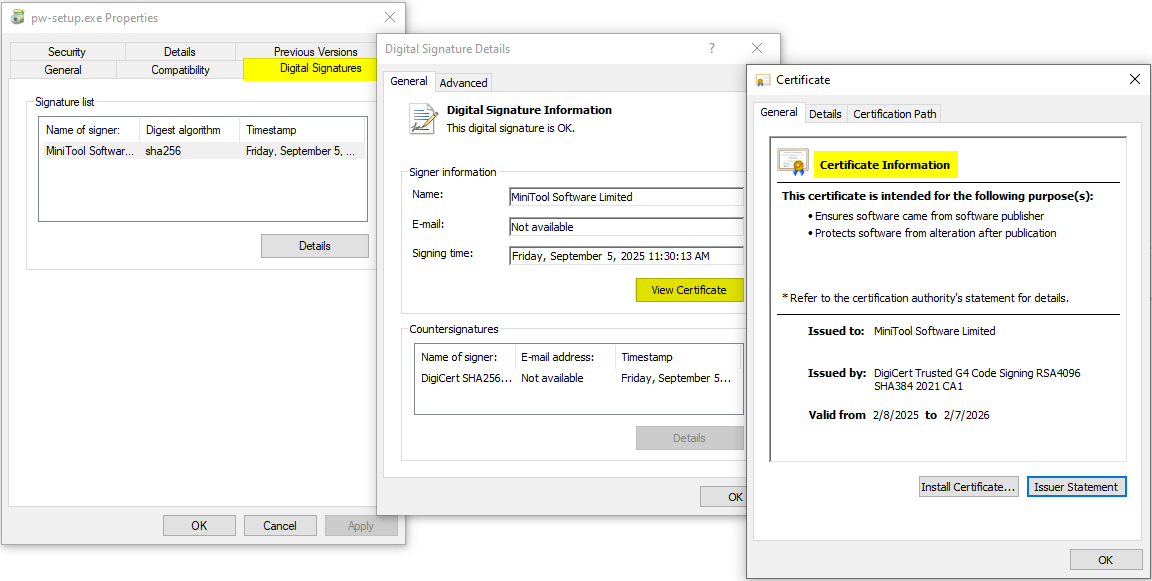
Rest assured that the official installer downloaded from MiniTool’s official website is 100% safe and clean.
Next, let’s look at a few simple ways to fix it and install MiniTool Partition Wizard smoothly.
How to Fix MiniTool Partition Wizard False Positive
1. ESET
If ESET reports a warning during installation, you have two options.
Option 1: Try allowing the installer directly
When the warning appears, try selecting Exclude, Ignore, Allow or similar options to continue the installation.
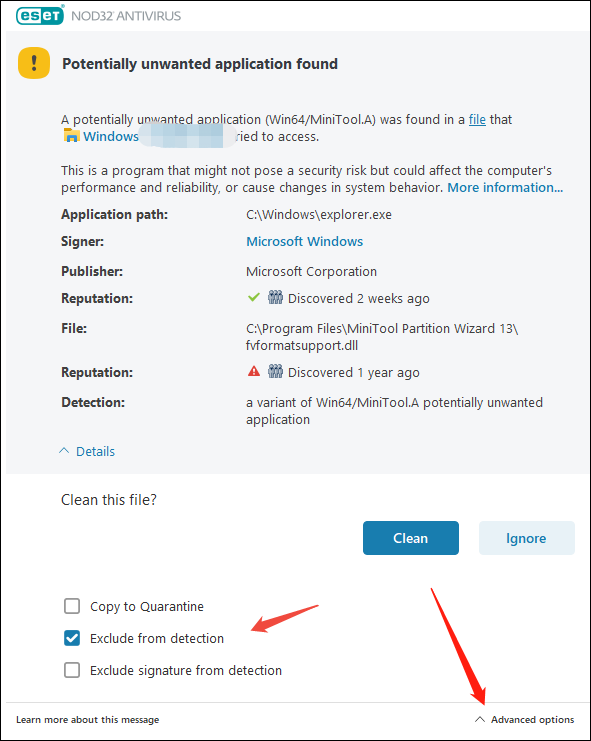
Option 2: Temporarily disable ESET and whitelist the program
Step 1. Temporarily disable ESET before installing MiniTool Partition Wizard.
Step 2. After installation, re-enable ESET and add the entire MiniTool Partition Wizard installation folder to the exclusion (whitelist) to prevent future false detections.
Also read: How to Exclude MiniTool Partition Wizard from ESET Unwanted Application
Kind remind: Add MiniTool Partition Wizard to the ESET whitelist also works when you see the following error:
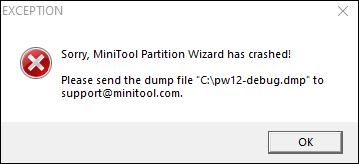
2. WEBROOT
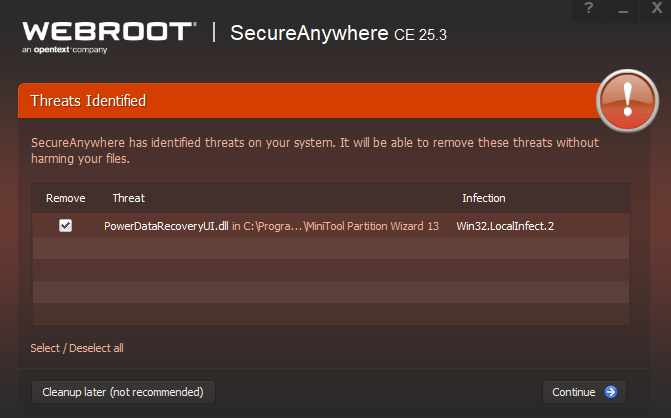
Option 1: Allow MiniTool directly when prompted
When it prompts MiniTool Partition Wizard as threats, select the option like Ignore, Allow or similar options.
Option 2: Add MiniTool Partition Wizard to the exclusion list
Step 1. Temporarily disable WEBROOT, and then reinstall MiniTool Partition Wizard.
Step 2. Add MiniTool Partition Wizard to the exclusion list or trusted applications section of your antivirus.
- Click the Settings icon next to PC Security.
- Switch to Block/Allow Files.
- click Add File to select the entire MiniTool Partition Wizard installation folder.
- When MiniTool Partition Wizard is listed there, select the Allow option.
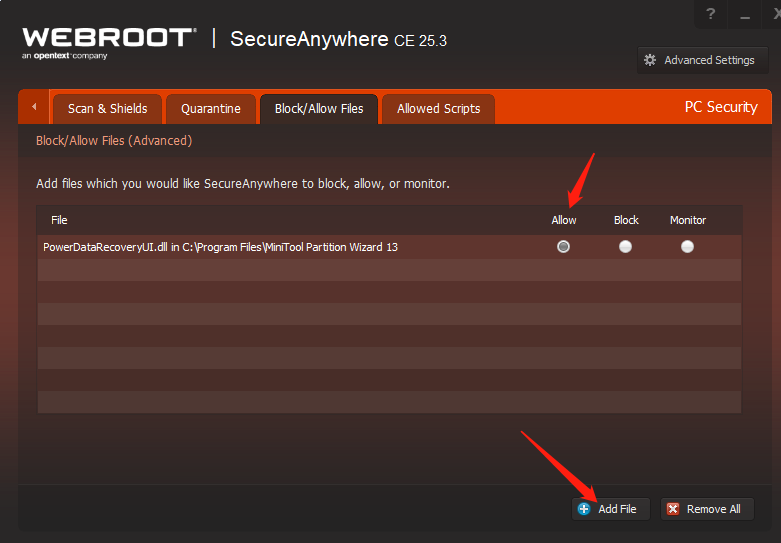
Option 3: Disable Realtime Shield temporarily
Or you can go to the main interface of WEBROT to disable Realtime Shield under the PC Security section. Then install and launch MiniTool Partition Wizard
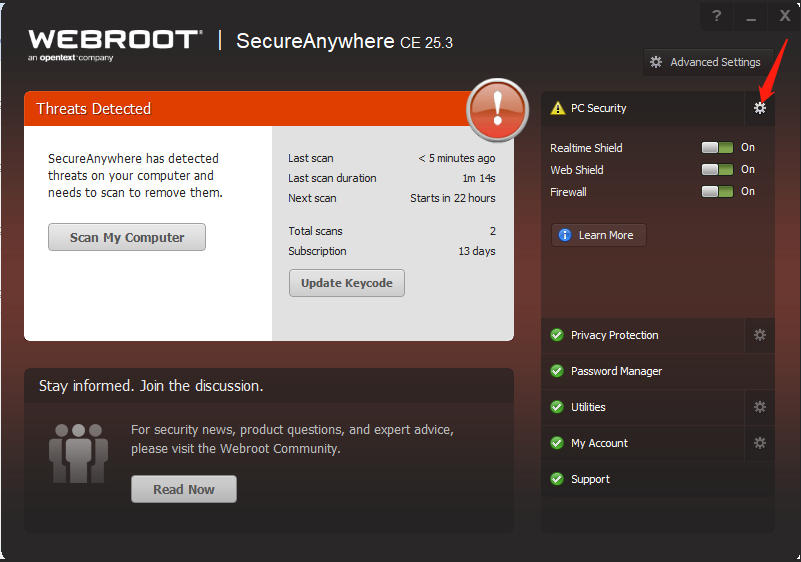
These steps should prevent the software from being flagged again. However, if you still experience false alerts, please contact MiniTool support at [email protected] for assistance.
What Is a False Positive?
A false positive occurs when antivirus or security software incorrectly identifies a safe program as malicious. This may happen because the software’s detection rules are too strict or its virus definitions are outdated.
Why MiniTool Partition Wizard Might Be Flagged
MiniTool Partition Wizard is a legitimate disk management tool. However, certain antivirus programs may flag it due to:
- Heuristic Analysis: The antivirus doesn’t recognize a specific virus, but find the program’s code structure and patterns look similar to a known piece of malware.
- Behavioral Similarities: The flagged program performs actions that are typical of malicious software, such as modifying system files, deeply accessing the registry, or attempting to elevate its own permissions.
- Packaging and Obfuscation: The flagged software is protected with tools that hide or compress its code. Because hackers often use the same tools, antivirus programs may mistake it for harmful software
- Unsigned Code: The flagged program does not have a valid digital signature from a trusted developer. The antivirus cannot verify who made it, so it flags the file as high-risk or untrustworthy.
- Outdated or Incorrect Databases: The antivirus software has an error in its list of threats, incorrectly matching your file’s unique digital ID (hash) with the ID of a known virus. Which means the antivirus database made a mistake.
- Potentially Unwanted Applications (PUA): The flagged program isn’t technically a virus, but it exhibits undesirable behaviors like installing extra unwanted software, displaying excessive ads, or collecting data aggressively, which is considered an “Annoyance in a Grey Area.”

User Comments :